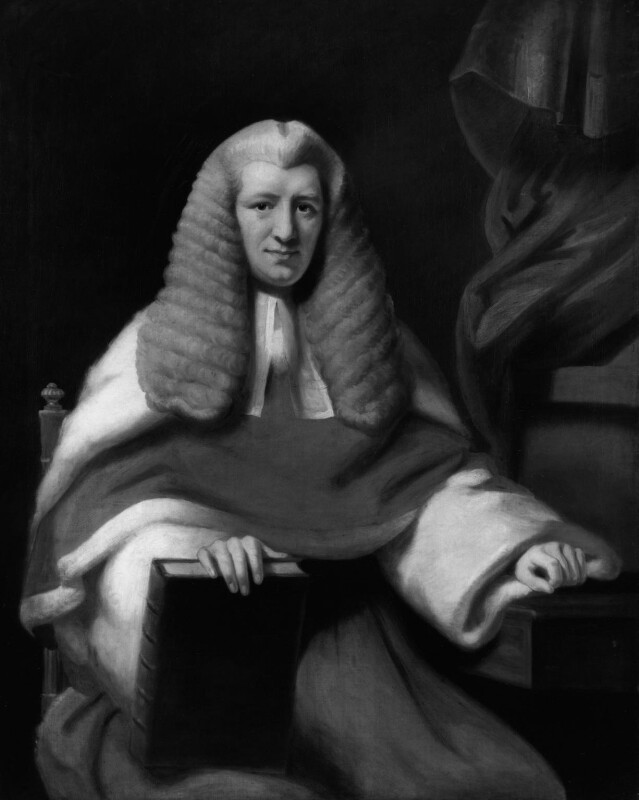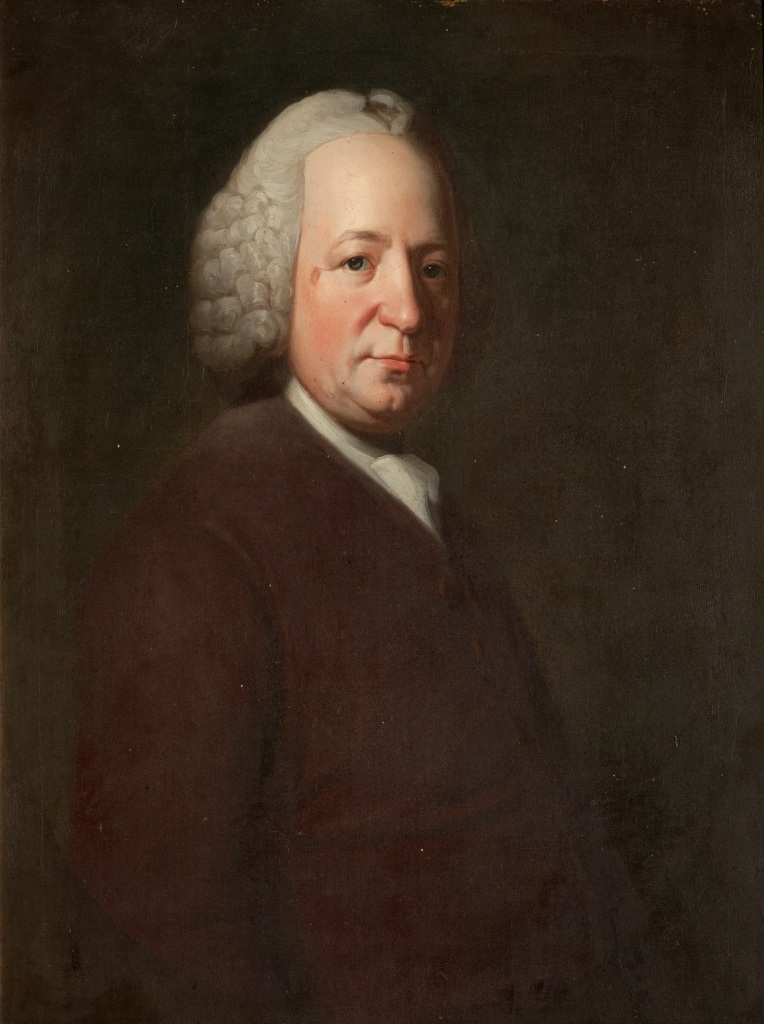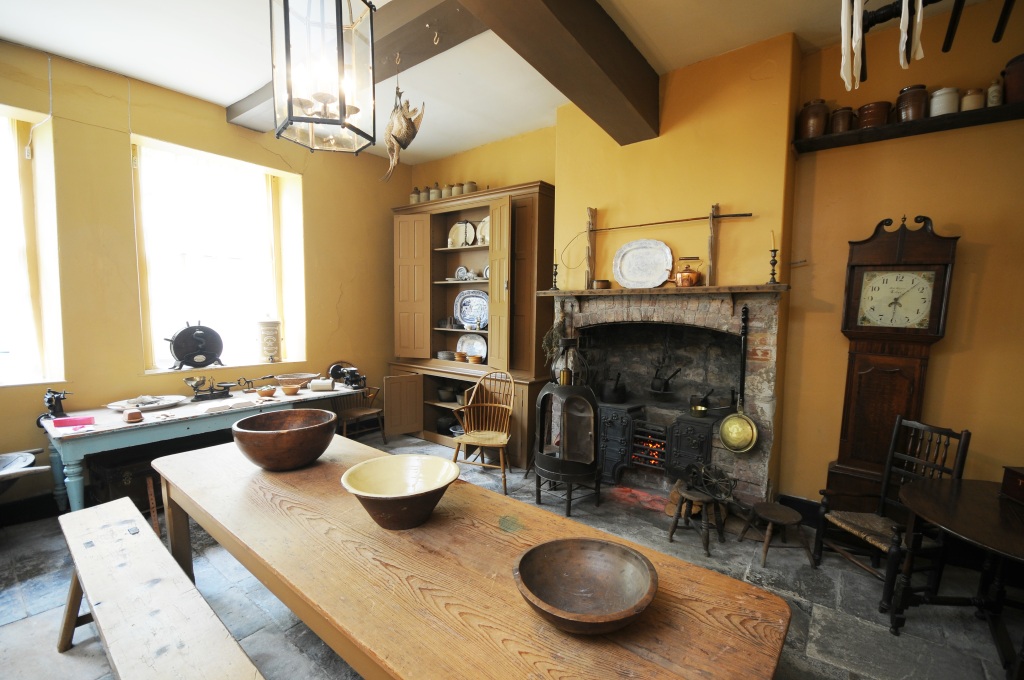
Sir John Bayley by William Russell. Oil on canvas, c.1808 (NPG 457) ©National Portrait Gallery.
Naomi Parsons, Museum Assistant at Judges’ Lodgings explores how the slave trade was woven into the social and economic life of Lancaster in the 18th and early 19th Centuries, by exploring the story of judge, Sir John Bayley.
Thomas Anson, Molly, Frances Elizabeth Johnson, Afamefuma, John Chance and Issac Rawlinson are all 18th Century Black Lancastrians featured in the Judges’ Lodgings current exhibition, Facing the Past. Kendal artist Lela Harris brought to life these six individuals who had been enslaved or worked as servants for local merchant families.
Wealthy families such as the Rawlinsons, Bonds and Satterthwaites, whose names are now closely linked to slavery, were intrinsically tied into the social and economic life of Lancaster in the 18th and early 19th Century. As well-respected businessmen, they took up roles in local government and law and order as Aldermen or Justices of the Peace, and some of their immediate descendants were involved in the petty courts held within the Judges’ Lodgings at the weekly Saturday sessions from 1829. In this post however, we look not at those merchants but at the assize circuit judges, who stayed at the Judges’ Lodgings after it had been purchased by the county in 1826. Though the Slave Trade had been abolished in 1807, slavery itself was not abolished until after 1833 and it is within this sphere that we examine judge, Sir John Bayley.

Called to the bar in 1792, initially to the Home Circuit and later the King’s Bench, by 1812, he was a regular judge at the Lancaster Assizes and would remain so for almost twenty years. Initially staying in inns and local homes rented for the purpose, he had been staying in the Judges’ Lodgings even prior to its purchase by the county in 1826. As a judge, he applied the law with ease as stated by French advocate M. Cotte ‘Il s’amuse a juger’ (judging is fun for him).
However, like many men of his class, he made investments in enterprises he considered worthwhile including the jint ownership of three sugar plantations. The plantations had come to John after 1810 when he was named as a trustee in the will of Simon Fraser of Ness Castle, Inverness. These plantations were ‘Good Hope’ and ‘560 A&B’ in the Demerara region of British Guiana (now Guyana on the north coast of South America) which had 840 enslaved Africans combined and ‘Castle Bruce’ on the island of Dominica with 162 enslaved people.
Perhaps John, being looked after by the housekeepers at the Judges’ Lodgings whilst staying in the 1820s was treated to a sweet tea or a piece of fruit cake that contained the Demerara sugar harvested by enslaved people from his own plantations. Local newspapers certainly indicate sugar and coffee were coming directly from Guyana, via Liverpool to St George’s Quay in Lancaster and delivered to the Hindes, a Lancaster family known for their long involvement with the slave trade as slave vessel captains, owners and merchants.

After the Slavery Abolition Act 1833 came into practice in the British West Indies in 1834, compensation claims were being entered by claimants for the financial loss of their ‘property’. Back in England, John was being made a Baronet and a member of the Privy Council and that year, made multiple claims for loss of property with his business partners.
By 1836, Sir John Bayley was awarded over £8000 for his shares in the three plantations. This equates to a staggering £765,000 in today’s money. Now retired, that same year he took a continental tour of Europe and wrote notes within ‘the Book of Common Prayer’ published and made available for sale that year.
We don’t have a record of John’s personal views on the slave trade, slavery, abolition and compensation but he is yet another example of the web of slavery underpinning society in 18th and early 19th century Lancaster.
Lela Harris’ portraits of the Black Lancastrians seen in her Facing the Past exhibition will continue to be on display at the Judges’ Lodgings from March to November 2024.
Judges’ Lodgings reopens to the public on Thursday 28th March 2024. Opening hours are: Thurs, Fri, Sat, Sun 11am – 4pm until 10th November.
Judges’ Lodgings Museum – Lancashire County Council
Judges Lodgings, Church Street, Lancaster, LA1 1YS
Tel: 01524 581241 Email: judgeslodgings@lancashire.gov.uk
